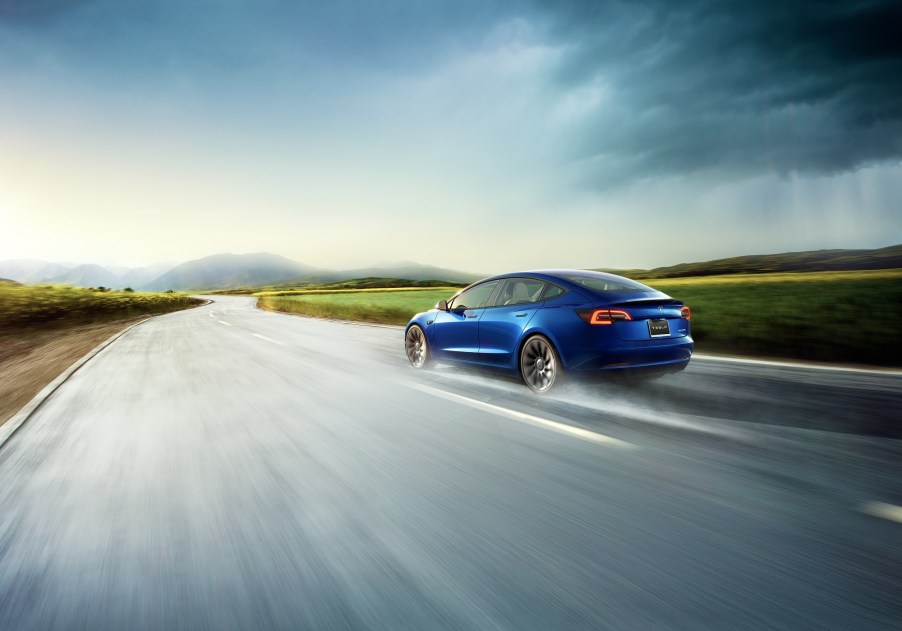
A Tesla Model 3 Long Range Could Lose 17% of Its Range in the Cold
The smallest, cheapest Tesla in the electric vehicle (EV) maker’s lineup has a lot to offer potential owners, but it is still subject to some of the same issues that other EV face. For instance, the Tesla Model 3 loses some of its range in temperature extremes like cold weather. However, even with a substantial loss of battery capacity in cold weather, the Model 3 holds its own against many of the popular EV options on the market when it comes to handling cold weather.
Is Tesla Model 3 good for winter?
The Tesla Model 3 is a good choice among battery electric vehicles (BEVs) when it comes to retaining as much electric range as possible. However, the baby Tesla still loses some driving range when temperatures drop. For instance, Recurrent says the Tesla Model 3 Long Range has a verified winter range loss of around 17% in freezing temperatures.
Moreover, the Long Range and Performance trims pack all-wheel drive (AWD). That architecture isn’t just for snappy launches with instant torque; it’s a beneficial feature for inclement weather like rain and snow. Also, even with compromised battery capacities in the cold, BEVs like the Model 3 don’t produce tailpipe emissions while they warm their cabins in the morning.
How far can Tesla Model 3 go in winter?
With its 17% verified drop in range in freezing temperatures, owners can expect the Tesla Model 3 to cover between 200 and 225 miles depending on conditions and driving behavior. That puts the Model 3 on par with a Tesla Model S P100D and its 19% verified winter range loss. However, even with a substantial loss, the baby Tesla outperforms several other popular EVs.

For instance, Recurrent says the Ford Mustang Mach-E Premium AWD has a verified loss of around 30% in freezing temperatures. Moreover, the wildly popular Nissan LEAF with 62 kWh architecture loses about 21%, and the Volkswagen ID.4 loses about 30% from 70 degrees Fahrenheit compared to freezing temperatures.
How cold is too cold for electric cars?
According to AAA, EVs might lose even more than 30% in freezing temperatures. For instance, AAA says that BEVs exposed to 20 degrees Fahrenheit could lose as much as 41% of their electric range. That’s a bit disheartening for commuters who have to cover a lot of ground in their EVs in challenging weather.
Still, it’s not just cold weather that steals an EV’s juice. AAA says that a BEV like a Tesla Model 3 could lose as much as 17% in temperatures of 95 degrees Fahrenheit or more. However, driving ranges are less compromised by heat than by extreme cold.
Do Teslas need winter tires?
Every vehicle, including Tesla models like the Model 3, can benefit from a set of seasonally appropriate tires. In terms of winter driving, even a Tesla with AWD will enjoy better grip with a set of winter tires or even studded tires to handle inclement weather.
However, AWD models will perform better with all-season tires than a RWD example with similar rubber. Do you commute in your EV? Tell us about it in the comments below!



